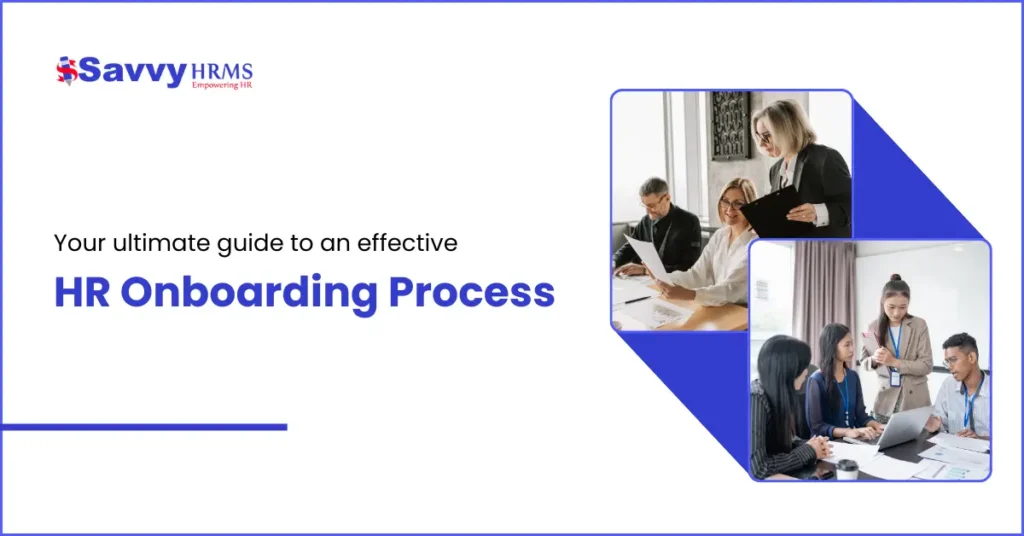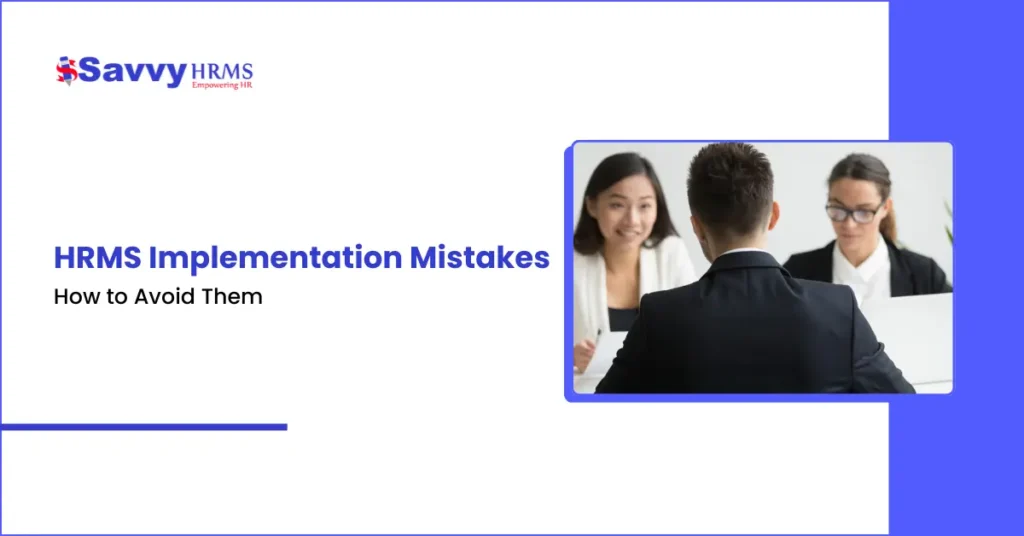What truly affects a new hire’s first approach to your organization?
The onboarding experience has a final impact on how welcomed, supported, and prepared a new employee feels from the first day. An intentional onboarding experience can not only ensure employees are successfully & comfortably adapting into a new organization, but also ensure they have the perfect platform, information, and confidence to grow. In a powerful talent marketplace, onboarding isn’t just about completing forms; it’s about creating connections, increasing engagement, and creating a platform for maintenance.
As both remote and hybrid teams work and ultimately continue to grow, organizations must think about their onboarding process to be smooth, personalized, and sensitive to various work experiences. With the suitable technology & best practices, organizations can provide a smooth, constant, impactful experience that prepares employees to be productive from day one of joining.
What is HR Onboarding?
HR onboarding is the organized process of welcoming new candidates into an organization. Onboarding includes everything from the time a candidate accepts the offer till they are adapted to the new job during the first few months. The motive of onboarding is to familiarize employees with the organizational culture, policies, procedures, social relationships, and workflows, so that they can work independently with confidence and in the direction of organizational goals.
Manual Onboarding included orientation and paperwork; however, now it includes modern and automated training, mentoring, and ongoing assistance with their onboarding process. Onboarding is repetitive and can be flexible to all types of roles and work settings, whether they are in an office or virtual settings. Onboarding involves multiple opportunities to attract new hires in meaningful ways that result in support and job commitment.
Why Do You Need an Effective HR Onboarding Process?
A successful onboarding program is important for improving employee productivity and maintenance, reducing build-up time, and boosting employee confidence. Without it, new candidates may feel disconnected, resulting in low engagement and early turnover.
Key reasons for a strong onboarding process include:
1. Boost Productivity
Well-prepared employees reach full performance in a short period of time. An organized onboarding minimizes confusion and enables new candidates to quickly understand their roles and responsibilities. This perfect start saves time and speeds up contribution to organizational goals.
2. Enhancing Engagement
Early positive experiences result in an emotional commitment. When new employees feel welcomed and supported, they develop a powerful connection with the organization. Involving employees is more motivated, productive, and likely to support the organization.
3. Reducing Turnover
Transparency and support minimize first-year turnover. Onboarding provides clear expectations and continuous guidance, which reduces doubts and frustration. This strong fundamental empowers employees to stay longer, lowering recruitment and training costs.
4. Aligning Culture and Values
Onboarding supports company identity and expectations. It introduces new candidates to organizational values, mission, and social standards as soon as possible. Employees better understand how they fit into the workplace, promoting unity and a shared sense of purpose.
5. Ensuring Compliance
Efficient implementation of legal and official requirements protects the organization from risk. Proper onboarding guides new candidates on policies, safety standards, and regulatory compliance. This minimizes some strong legal issues and ensures a safe and protected workplace.
By investing in onboarding, organizations get a competitive benefit through a motivated, informed workforce that is ready to contribute efficiently
What are the types of HR Onboarding?
1. Physical HR Onboarding Process
Stage 1: Pre-Arrival Preparation
Before the new employee’s onboarding day, detailed preparation is important to ensure a smooth beginning and positive first impression. This stage sets the base for their onboarding experience.
- Gather all essential documentation, such as signed offer letters, tax forms, and ID proofs.
- Prepare the employee’s workspace, including desk, computer, phone, and access cards.
- Collect welcome kits featuring the company brand, handbooks, and other important supplies.
- Inform the necessary departments (IT, facilities, security) to set up systems and access.
- Send a friendly welcome email sharing first-day details and what to expect.
Stage 2: First Day Orientation
The first day merges new candidates into the organizational culture and provides important introductions and administrative processes. It helps build comfort and familiarity.
- Conduct a welcome session explaining the company’s mission, values, and policies.
- Provide an office tour to familiarize them with facilities, emergency exits, and services.
- Introduce new employees to their teams, managers, and key contacts.
- Complete remaining paperwork, such as benefits enrollment and compliance forms.
- Set expectations for the onboarding timeline and initial responsibilities.
Stage 3: Training and Development
Training is important for role capability and regulatory compliance. This stage ensures that employees are equipped with the knowledge and skills needed to perform well.
- Provide role-specific training, including software systems, tools, and workflows.
- Conduct necessary compliance training, such as workplace safety and harassment prevention.
- Assign hands-on tasks and mentorship opportunities with experienced colleagues.
- Schedule follow-up sessions for ongoing skill development and clarification.
- Introduce learning resources and promote a continuous education culture.
Stage 4: Social Integration
Building strong social connections promotes collaboration and helps new candidates feel part of the team, improving engagement and maintenance.
- Arrange informal team lunches or coffee breaks to build confidence.
- Assign a mentor or buddy for support and guidance during the initial weeks.
- Ease networking opportunities across various departments with group activities.
- Improve participation in company-wide events and employee resource groups.
- Promote open communication channels for social and professional interaction.
Stage 5: Ongoing Support and Feedback
Continuous support ensures the new employee’s successful transformation and growth within the organization, boosting long-term engagement.
- Take regular check-ins between the employee and manager to discuss progress and concerns.
- Set clear performance goals and expectations for the probation period.
- Provide informative, timely feedback and recognize achievements.
- Offer access to coaching, counseling, or employee assistance programs if needed.
- Ask for feedback on the onboarding experience to refine and improve the process.
This approach in physical onboarding prepares new candidates completely, promoting successful integration and long-term contribution.
2. Virtual HR Onboarding Process
Stage 1: Pre-Boarding Activities
Pre-boarding sets the stage for a smooth virtual onboarding by preparing the new candidate well before their first day, ensuring preparedness and engagement.
- Send digital documents for completion, including contracts and tax forms.
- Craft necessary materials like laptops and headsets to the employee’s home.
- Provide access credentials and access to software and communication tools in advance.
- Share welcome emails and videos to introduce organizational culture and expectations.
- Schedule a post-virtual meeting with HR or the manager to clarify first-day details and answer questions.
This active preparation helps new candidates feel informed, supported, and connected from day one, even virtually.
Stage 2: Virtual Welcome and Orientation
Online welcome and orientation introduce new candidates to organizational culture and key contacts through engaging online sessions. It creates a welcoming environment that boosts connection instead of physical distance.
- Introduce live virtual welcome meetings covering mission, values, and culture.
- Share engaging presentations and videos about company information and leadership.
- Take virtual organizational tours to familiarize employees with their digital environment.
- Add new candidates to communication platforms for simpler collaboration.
- Arrange meet-and-greet video calls with managers and mentors.
- Provide a clear schedule for the first week to set expectations.
- Encourage questions and interactions to build comfort and engagement.
This organized online orientation builds a strong foundation for remote employees’ growth.
Stage 3: Remote Training
Online training provides new candidates with the knowledge and skills required for their role through virtual and interactive training sessions. It ensures continuous development and engagement instead of long distances.
- Give role-specific training through e-learning modules that can be accessed anytime.
- Take live sessions and virtual workshops to ease real-time interaction.
- Implement virtual session programs connecting new candidates with experienced employees for guidance.
- Use interactive tools like quizzes, breakout rooms, and polls to improve engagement.
- Provide access to digital resources, manuals, and essential e-content for self learning.
- Schedule regular check-ins to check progress and point out challenges.
- Powerful insights to track training success and personalize learning paths.
This approach manages training quality and boosts employee growth in a flexible and supportive online environment.
Stage 4: Digital Social Engagement
Digital social engagement boosts connection and is essential for remote employees. It recreates informal office interactions to build fellowship and teamwork virtually.
- Schedule online coffee chats and casual video calls.
- Generate social channels on team collaboration platforms for formal conversations.
- Arrange virtual team-building activities like games and quizzes.
- Encourage interest-based groups and identification forums.
- Simplify buddy programs to connect new candidates with experienced colleagues.
This process ensures remote employees feel supported, connected, and prepared for success.
Stage 5: Continuous Remote Support
Regular remote support keeps new candidates connected and productive by providing ongoing communication, technical assistance, and personalized guidance.
- Plan regular video check-ins for productivity updates and feedback.
- Provide committed IT support to quickly solve the technical issues.
- Gather ongoing feedback through surveys and online sessions.
- Provide mental health and wellness resources adapted for remote employees.
- Maintain open channels for equal support and collaboration.
- Improve continuous learning with access to online development tools.
- Modify support based on candidate needs to ensure employee success.
This constant support is key to encouraging engagement, productivity, and job satisfaction in virtual organizations.
How does automation improve the HR Onboarding process?
Automation using onboarding software simplifies and improves the whole onboarding process by minimizing manual tasks, boosting accuracy, and ensuring compliance. These digital solutions provide combined control, customized experiences, and integration with other HR systems, making onboarding effective and smooth for both new candidates and HR leaders.
1. Digital form collection and compliance management
HR Onboarding software digitally gathers important forms and confirms submission, ensuring legal and policy compliance. It minimizes errors and administrative workload by managing approvals and deadlines digitally.
2. Paperless documentation using E-signature
Employees can sign documents digitally, reducing the need for manual paperwork. This fastens the onboarding process and supports familiar processes.
3. Task tracking and workflow visibility
HR leaders and managers can assign, track, and monitor onboarding tasks through dashboards. This visibility ensures accountability and the timely completion of essential onboarding formalities.
4. Customized onboarding experience
The software customizes the onboarding process based on job roles and departments, providing applicable training and resources that improve role preparation and engagement.
5. Smooth integration and automation
Smooth integration automates whole processes like salary setup, benefits enrollment, and IT access equipping, minimizing delays and inconsistencies.
This automation helps organizations deliver consistent, compliant, and engaging onboarding experiences while saving HR valuable time and resources.
What are the Best Practices for the HR Onboarding Process?
Efficient onboarding sets a positive tone and aligns new candidates for success by engaging them early, personalizing their experience, providing consistent support, and boosting connections. It increases engagement, minimizes turnover, and speeds up productivity by aligning expectations and enabling meaningful integration.
1. Pre-onboarding engagement
Engage new candidates with training materials, access setup, and welcome communications to minimize anxiety and prepare them.
2. Role-specific training
Adapt content and training to fit job responsibilities and experience for faster build-up and applicability.
3. Mentorship support
Give support, answer questions, and ease cultural integration through a selected equal guide.
4. Interactive learning
Incorporate videos, quizzes, and live sessions to improve engagement and maintenance of important knowledge.
5. Clear role expectations
Communicate role objectives and organizational values early to align employee focus and motivation.
6. Team and culture integration
Ease team introductions, social channels, and informal activities for connection and collaboration.
7. Feedback and improvement
Use surveys and check-ins to improve onboarding based on new candidates’ experiences.
These processes improve the onboarding journey, making employees confident, connected, and productive faster.
Why Choose Savvy HRMS for HR Onboarding?
Savvy HRMS transforms HR onboarding with its completed automated platform designed for both physical and virtual employees. Its user-friendly dashboard allows HR leaders to customize onboarding journeys, simplify document management, and ensure smooth compliance. With integrated digital forms, progress trackers, and communication tools, Savvy HRMS makes onboarding easiest, transparent, and engaging.
By applying Savvy HRMS’s powerful automation, organizations minimize manual efforts and increase new candidate productivity. The platform supports personalized experiences with adapted content and guiding features, boosting early connections and preservation. HR managers gain real-time analytics into the onboarding process and team engagement, enabling active support and course corrections.
Savvy HRMS also ensures data security and regulatory compliance with powerful access controls and audit logs. Its scalable process adapts to organizations of all sizes and industries, making it the ideal solution for modern onboarding challenges and issues.
Conclusion
An effective onboarding process is a successful investment in building productive and committed employees. By correctly integrating physical or virtual onboarding stages, utilizing automation, and adopting best practices, organizations create welcoming experiences that empower new employees to succeed. Modern onboarding requires quickness, personalization, and continuous improvement to meet increasing workforce needs.
Selecting an automated and digital HRMS solution like Savvy HRMS simplifies onboarding management, improves compliance, and supports smooth integration for new candidates. As organizations compete for top talent, a strategic onboarding process powered by creating technology is key to securing long-term success and growth for the organization.



